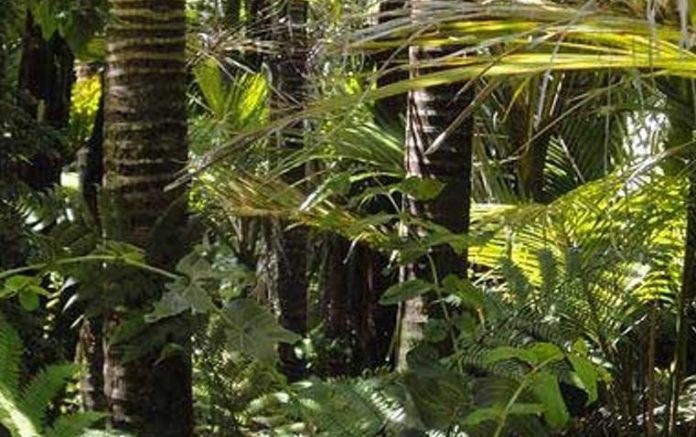The bark of the Galbulimima belgraveana tree, found only in remote rainforests of Papua New Guinea and northern Australia, has long been used by indigenous people for both healing and ceremony. A tea brewed from the bark not only induces a dreamlike state but is said to ease pain and fever. To probe these effects, researchers have isolated more than 40 unique chemicals from the tree bark but have struggled to reproduce the compounds in the lab or study their biology.
Now, Scripps Research scientists have developed a method to synthesize one of these chemicals known as GB18. Their approach, described online in the journal Nature on May 12, 2022, includes a new type of reaction that could be useful in synthesizing other chemicals. It also let them produce enough GB18 to study its effects on human brain cells and discover that the chemical binds to opioid receptors—the same molecules targeted by many painkillers. While opioid painkillers activate these receptors, however, GB18 turns them off—a function that some researchers hypothesize could be useful in treating depression and anxiety.
“This goes to show that Western medicine hasn’t cornered the market on new therapeutics; there are traditional medicines out there still waiting to be studied,” says senior author Ryan Shenvi, PhD, a professor of chemistry at Scripps Research. “Our hope is that we can turn GB18 into a useful medicine.”
In the 1950s, Galbulimima belgraveana caught the attention of Australian researchers, who began isolating and studying its chemicals, called GB alkaloids. Some GB alkaloids were found to decrease smooth muscle spasm. Some increased heart rate, whereas others decreased it. A structural outlier, GB18, affected mouse behavior and appeared to be psychotropic. But without the ability to recreate the compounds in the lab, it was difficult to further pursue their potential therapeutic value.
While some members of the Shenvi lab recently worked out ways to synthesize other GB alkaloids—described in Science in March 2022—Scripps graduate student Stone Woo tackled GB18. Its structure was particularly tricky, with a chemical ring tucked in a hard-to-access pocket, like a mug handle attached to the inside of a cup instead of the outside. Woo discovered a series of chemical steps, however, that could produce the desired structure, exactly mimicking the structure of GB18 found naturally in Galbulimima belgraveana bark.
“Stone was able to devise this beautiful choreography for bringing together small chemicals to assemble the complex constellation that is GB18,” explains Shenvi. “He developed a way to build this ring motif that is unprecedented.”
The method that Woo devised, in fact, let him control which side of GB18 the ring could be tacked on to—an innovation with implications for creating variants of GB18 as well as for carrying out other chemical syntheses involving similar rings.
“The way we were able to efficiently assemble these molecular connections could prove useful in other contexts,” says Woo.
Once the researchers had a means to synthesize GB18, they produced enough of it to use in screening experiments conducted through the National Institute of Mental Health Psychoactive Drug Screening Program, run by Professor Bryan Roth of UNC Chapel Hill. These screens revealed that GB18 bound to two different opioid receptors in the brain. These receptors had never before been identified as targets of any GB alkaloids and represent the first new receptors linked to Galbulimima belgraveana activity in more than 35 years.
Now, the researchers are further studying the exact biological impact of GB18’s binding to the opioid receptors. While opioid drugs involved in the ongoing overdose epidemic will activate these receptors, GB18 seems to shut them off. Shenvi says that may make GB18 useful as an antidepressant or anti-anxiety drug, but more work is needed to adapt it to human use.















